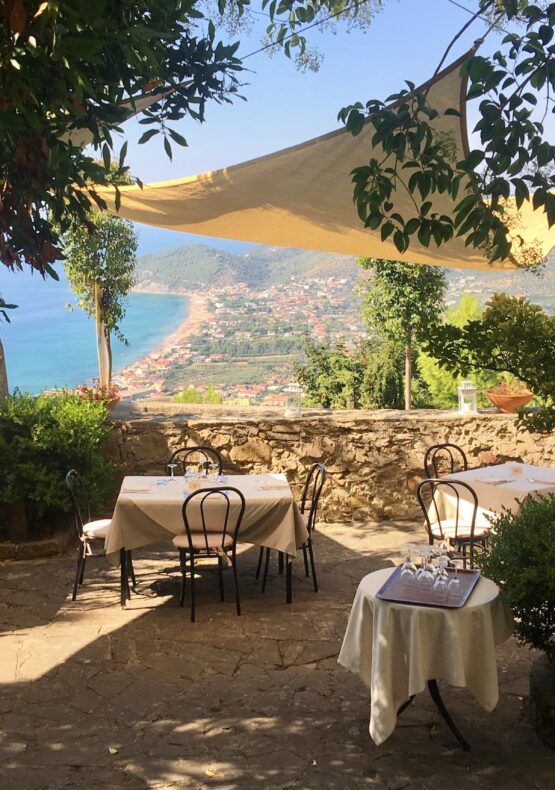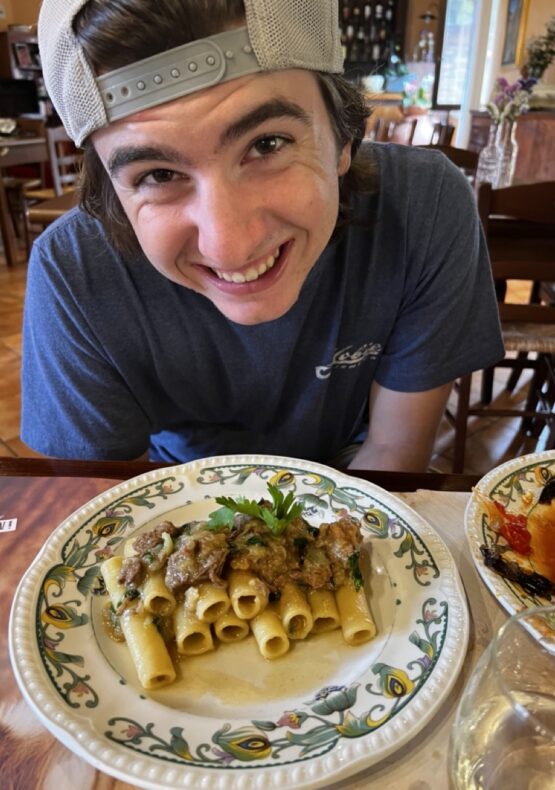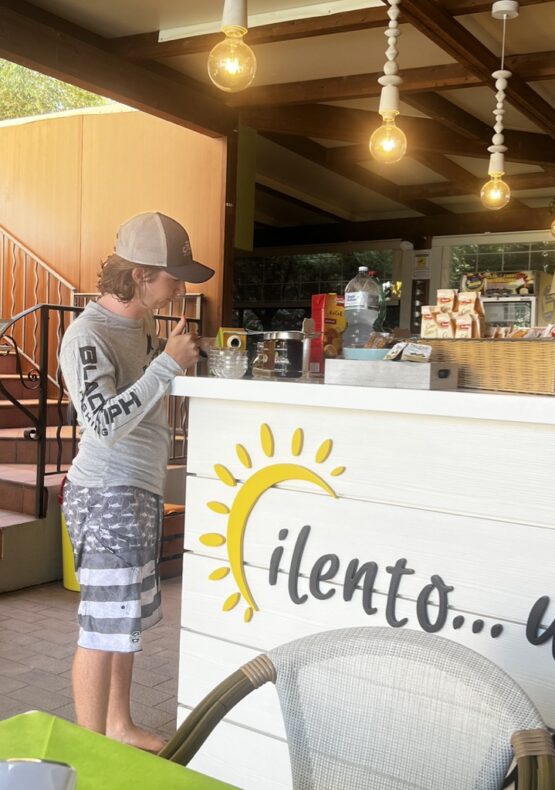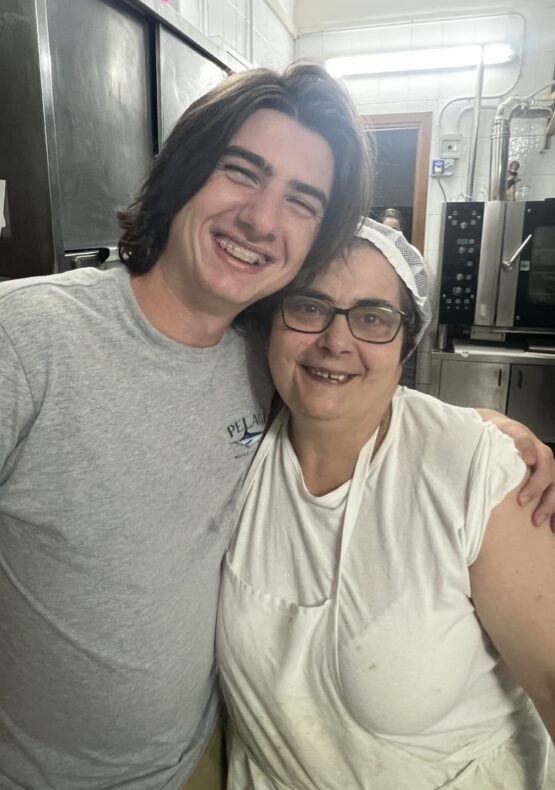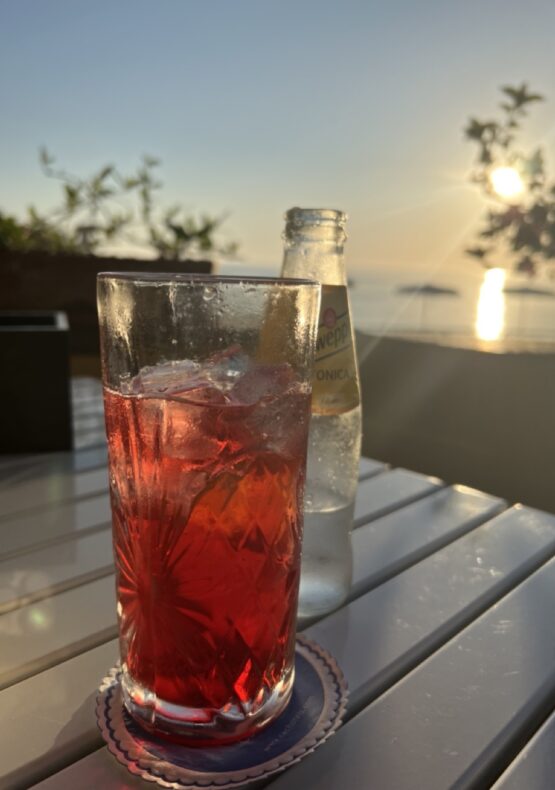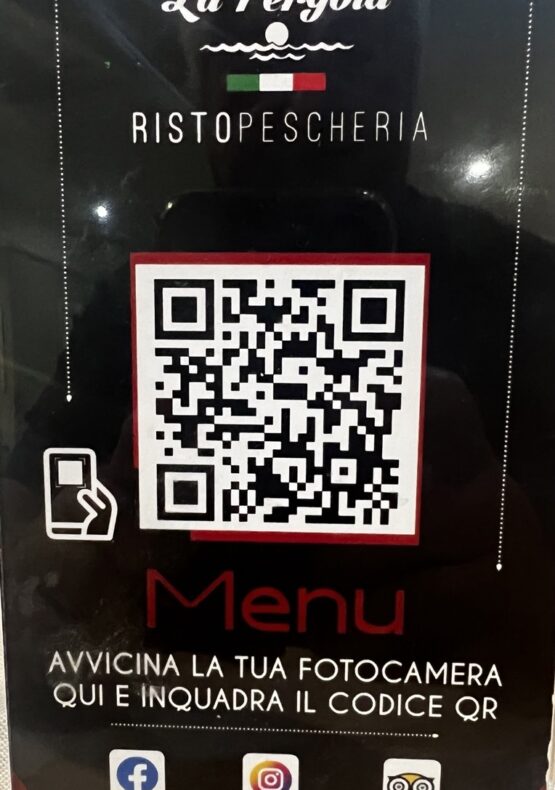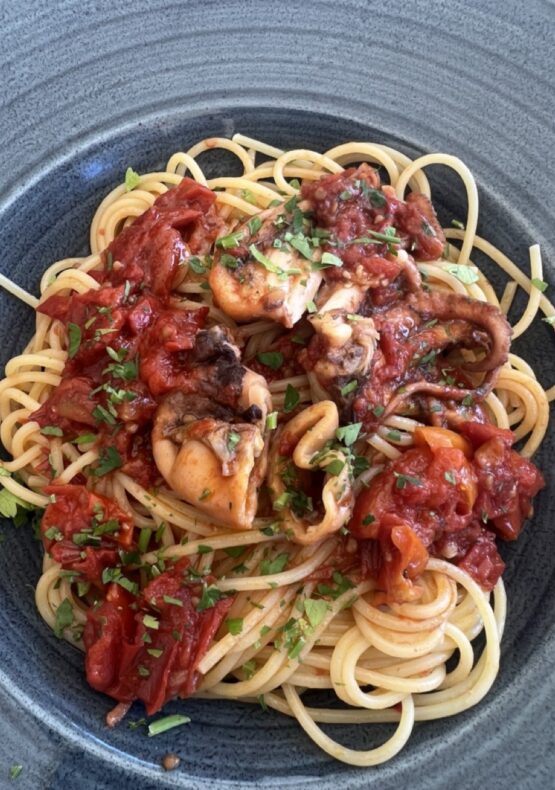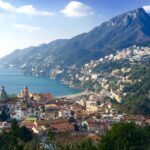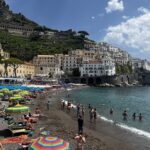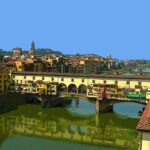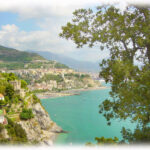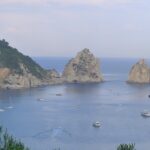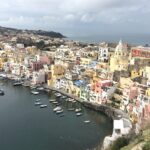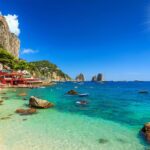Unlike the Amalfi coast it doesn’t have those well-known villages spilling into the sea like glitter on an Olympic gymnast’s cheeks. It also doesn’t have the crush of tourists afraid of driving the winding roads. The Cilento, you might be happy to know, has been structured to dismiss mass tourism, while making personal tourism much more compelling.
In a great part of the territory of Cilento and Vallo di Diano there was instituted, on 1991, a national park, to protect the territory from building speculation and mass tourism. In 1998 the park became a World Heritage Site of UNESCO. Wikipedia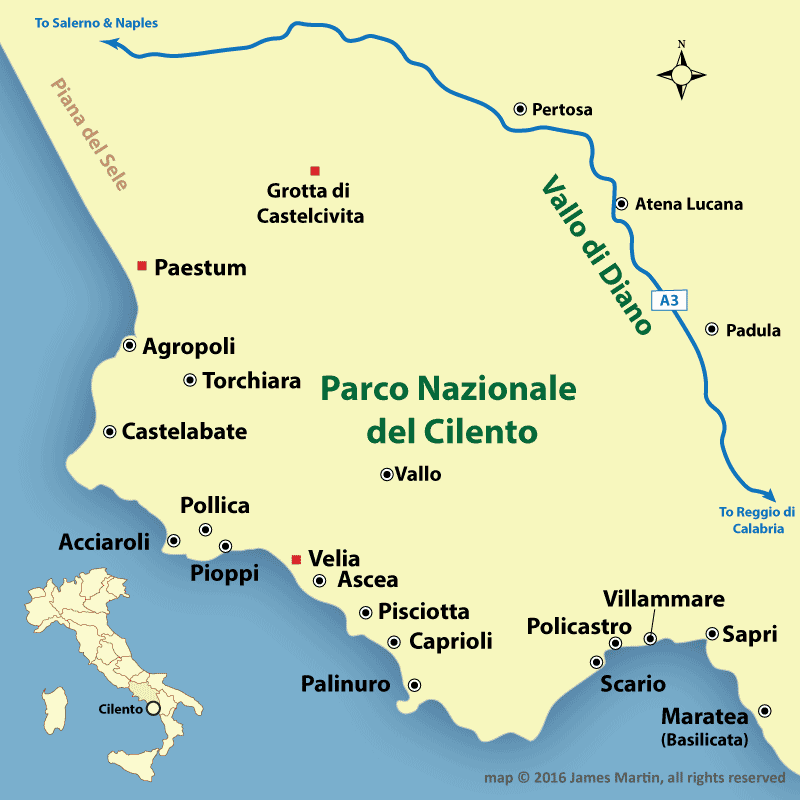 In this sparsely populated land of mountains and valleys you’ll come across some of the finest buffalo mozzarella you’ve ever tasted; yes, this is the place in Italy where the buffalo roam. Your pizza will likely be authentic; Italy’s iconic fast food from a wood oven awaits your knife.
Over 100km of fine beaches, many of them flying the coveted blue flag indicating exceptionally clean water, are ready to embrace your work-suffering body from April to October.
As you head down the coast to the Greek archaeological site of Paestum you’ll be on the flat part of the Cilento, the Sele plain. South of the site is the Cilento’s biggest city, Agropoli, which makes for a fine base to explore the coastal villages.
Just a bit further down the road is the castled hill town of Castelabate with its intriguing historic center and fine views. It was the setting of the popular movie Benvenuti al Sud, Welcome to the South.
The Autostrada A3 [autostrada map] runs through the Vallo di Diano, the Diano valley, and runs close to some amazing sites, including the Pertosa Caves and the Certosa di Padula, the second largest Charterhouse in Italy after the one in Parma, and sports the largest cloister in the world. You can see it nestled in the Diano valley below.
Although a bit out of the way, the Caves of Castelcivita offer a 1-mile (1.7 km) pathway that allows you to view the stalactites and stalagmites, and other geological formations.
Sure, you’ve heard of the stunning Greek temples at Paestum, and you really should visit. If you have time and want to know what all the fuss is about when really fresh mozzarella di bufala is mentioned, then you really need to visit Barlotti Caseficio at Via Torre di Paestum 1 and have a little tasting, best done in early afternoon after that day’s batch is produced.
You’re less likely to know about the Cilento’s other compelling archaeological site, Velia, originally founded by Greeks around 538–535 BC and called Hyele. The name later changed to Ele and then Elea–and it is Elea that you might find on street signs in the Cilento along with Velia.
Velia is an enormous site; it’s enclosing walls were around 3 miles long. During my pre-trip research, I was lead to believe there wasn’t much to this site, but you start exploring on the plains, then hike up the hillside to discover more and more. On top there is a medieval tower sitting atop a Greek church, shown below. A short hike away is the high gate to the city, called the Rose Gate. Don’t miss this site, it’s interesting and there are two museums on the site. Plus, you’ll get some exercise. Then you can eat more mozzarella.
Agropoli is the largest town, and makes a fine base for exploring the region. From here a 15 minute drive takes you to the celebrated hill town of Castellabate, the primary location of the popular Italian film “Benvenuti al Sud”. From the castle ruins of Castellabate the views of the seaside are stunning–and the main piazza is buzzing with cafes, restaurants and a wine bar, despite its diminutive size.
Acciaroli is a very pleasant seaside village. It’s another place you might consider for a base. Stay a long while. The place is know for the longevity of its residents. Some 300 centenarians ply the streets and walkways of this little fishing village, and 20 percent of them have reached 110. Hemingway spent his time between books here.
Considering the concentration of healthy, elderly people in the Cilento, you might not be surprised that Ancel Kays set down his anchor in nearby Pioppi and spent 28 years in the little seaside village studying the Mediterranean diet. There is an impressive villa in town, and it houses the Museo Vivo del Mare on the lower level and a museum devoted to Keys’ work on the upper level where you can learn about the components and practices that make up the Mediterranean Diet. Keys practiced what he preached; he lived to be over 100.
After Pioppi, you can get off the slightly beaten track and head up the mountain towards Pollica, a larger town and gateway to the small mountain communities that harvest the good things that make local folks a long life. You might just rent an apartment nearby and gather some of these delights. Buffalo mozzarella is everywhere.
Or, you can go to the Pioppi Cafe right on the main thoroughfare and get a light lunch right on the beach, or stay inside and have lunch while you’re seated on one of the cafe’s two stationary bicycles. The Mediterranean Diet isn’t just about eating right, exercise is involved as well.
Policastro, or Policastro Bussentino isn’t a blockbuster attraction on the southern coast. It has a fine and very clean beach that attracts European tourists in summer, but the old town has some interesting features nobody seems to be talking about. The city is surrounded by 11th century Norman walls utilizing earlier constructions by the Greeks and Romans, for example. High on the hill, the castle was a Byzantine fortress built in the 6th and 7th centuries.
The church was built on the site of a pagan temple dedicated to Castor and Pollus. It has a 6th century crypt with re-used Roman columns holding it together; it was built over an area previously occupied by the Roman forum. It has a painted wooden ceiling and tile floors reminiscent of a Portuguese church.
There are many small towns in the Cilento to explore like Sapri, near the border with the Basilicata region and the compelling destination of Maratea. Sapri has a Facebook page of things to see and do.
Lots of Italians go to the Cilento seaside for summer vacations. The place is very active at that time, but tourist season runs from April through September, so if you’re outside that window, many restaurants will be closed. We went in late October, and it was a pleasant time to go as far as the weather, but many restaurants were indeed closed for the season–or just open on weekends. Of course, the restaurants and pizzerias that serve the locals run all year, so you’ll have enough eateries to choose from if you do go in off season.
In this sparsely populated land of mountains and valleys you’ll come across some of the finest buffalo mozzarella you’ve ever tasted; yes, this is the place in Italy where the buffalo roam. Your pizza will likely be authentic; Italy’s iconic fast food from a wood oven awaits your knife.
Over 100km of fine beaches, many of them flying the coveted blue flag indicating exceptionally clean water, are ready to embrace your work-suffering body from April to October.
As you head down the coast to the Greek archaeological site of Paestum you’ll be on the flat part of the Cilento, the Sele plain. South of the site is the Cilento’s biggest city, Agropoli, which makes for a fine base to explore the coastal villages.
Just a bit further down the road is the castled hill town of Castelabate with its intriguing historic center and fine views. It was the setting of the popular movie Benvenuti al Sud, Welcome to the South.
The Autostrada A3 [autostrada map] runs through the Vallo di Diano, the Diano valley, and runs close to some amazing sites, including the Pertosa Caves and the Certosa di Padula, the second largest Charterhouse in Italy after the one in Parma, and sports the largest cloister in the world. You can see it nestled in the Diano valley below.
Although a bit out of the way, the Caves of Castelcivita offer a 1-mile (1.7 km) pathway that allows you to view the stalactites and stalagmites, and other geological formations.
Sure, you’ve heard of the stunning Greek temples at Paestum, and you really should visit. If you have time and want to know what all the fuss is about when really fresh mozzarella di bufala is mentioned, then you really need to visit Barlotti Caseficio at Via Torre di Paestum 1 and have a little tasting, best done in early afternoon after that day’s batch is produced.
You’re less likely to know about the Cilento’s other compelling archaeological site, Velia, originally founded by Greeks around 538–535 BC and called Hyele. The name later changed to Ele and then Elea–and it is Elea that you might find on street signs in the Cilento along with Velia.
Velia is an enormous site; it’s enclosing walls were around 3 miles long. During my pre-trip research, I was lead to believe there wasn’t much to this site, but you start exploring on the plains, then hike up the hillside to discover more and more. On top there is a medieval tower sitting atop a Greek church, shown below. A short hike away is the high gate to the city, called the Rose Gate. Don’t miss this site, it’s interesting and there are two museums on the site. Plus, you’ll get some exercise. Then you can eat more mozzarella.
Agropoli is the largest town, and makes a fine base for exploring the region. From here a 15 minute drive takes you to the celebrated hill town of Castellabate, the primary location of the popular Italian film “Benvenuti al Sud”. From the castle ruins of Castellabate the views of the seaside are stunning–and the main piazza is buzzing with cafes, restaurants and a wine bar, despite its diminutive size.
Acciaroli is a very pleasant seaside village. It’s another place you might consider for a base. Stay a long while. The place is know for the longevity of its residents. Some 300 centenarians ply the streets and walkways of this little fishing village, and 20 percent of them have reached 110. Hemingway spent his time between books here.
Considering the concentration of healthy, elderly people in the Cilento, you might not be surprised that Ancel Kays set down his anchor in nearby Pioppi and spent 28 years in the little seaside village studying the Mediterranean diet. There is an impressive villa in town, and it houses the Museo Vivo del Mare on the lower level and a museum devoted to Keys’ work on the upper level where you can learn about the components and practices that make up the Mediterranean Diet. Keys practiced what he preached; he lived to be over 100.
After Pioppi, you can get off the slightly beaten track and head up the mountain towards Pollica, a larger town and gateway to the small mountain communities that harvest the good things that make local folks a long life. You might just rent an apartment nearby and gather some of these delights. Buffalo mozzarella is everywhere.
Or, you can go to the Pioppi Cafe right on the main thoroughfare and get a light lunch right on the beach, or stay inside and have lunch while you’re seated on one of the cafe’s two stationary bicycles. The Mediterranean Diet isn’t just about eating right, exercise is involved as well.
Policastro, or Policastro Bussentino isn’t a blockbuster attraction on the southern coast. It has a fine and very clean beach that attracts European tourists in summer, but the old town has some interesting features nobody seems to be talking about. The city is surrounded by 11th century Norman walls utilizing earlier constructions by the Greeks and Romans, for example. High on the hill, the castle was a Byzantine fortress built in the 6th and 7th centuries.
The church was built on the site of a pagan temple dedicated to Castor and Pollus. It has a 6th century crypt with re-used Roman columns holding it together; it was built over an area previously occupied by the Roman forum. It has a painted wooden ceiling and tile floors reminiscent of a Portuguese church.
There are many small towns in the Cilento to explore like Sapri, near the border with the Basilicata region and the compelling destination of Maratea. Sapri has a Facebook page of things to see and do.
Lots of Italians go to the Cilento seaside for summer vacations. The place is very active at that time, but tourist season runs from April through September, so if you’re outside that window, many restaurants will be closed. We went in late October, and it was a pleasant time to go as far as the weather, but many restaurants were indeed closed for the season–or just open on weekends. Of course, the restaurants and pizzerias that serve the locals run all year, so you’ll have enough eateries to choose from if you do go in off season.

